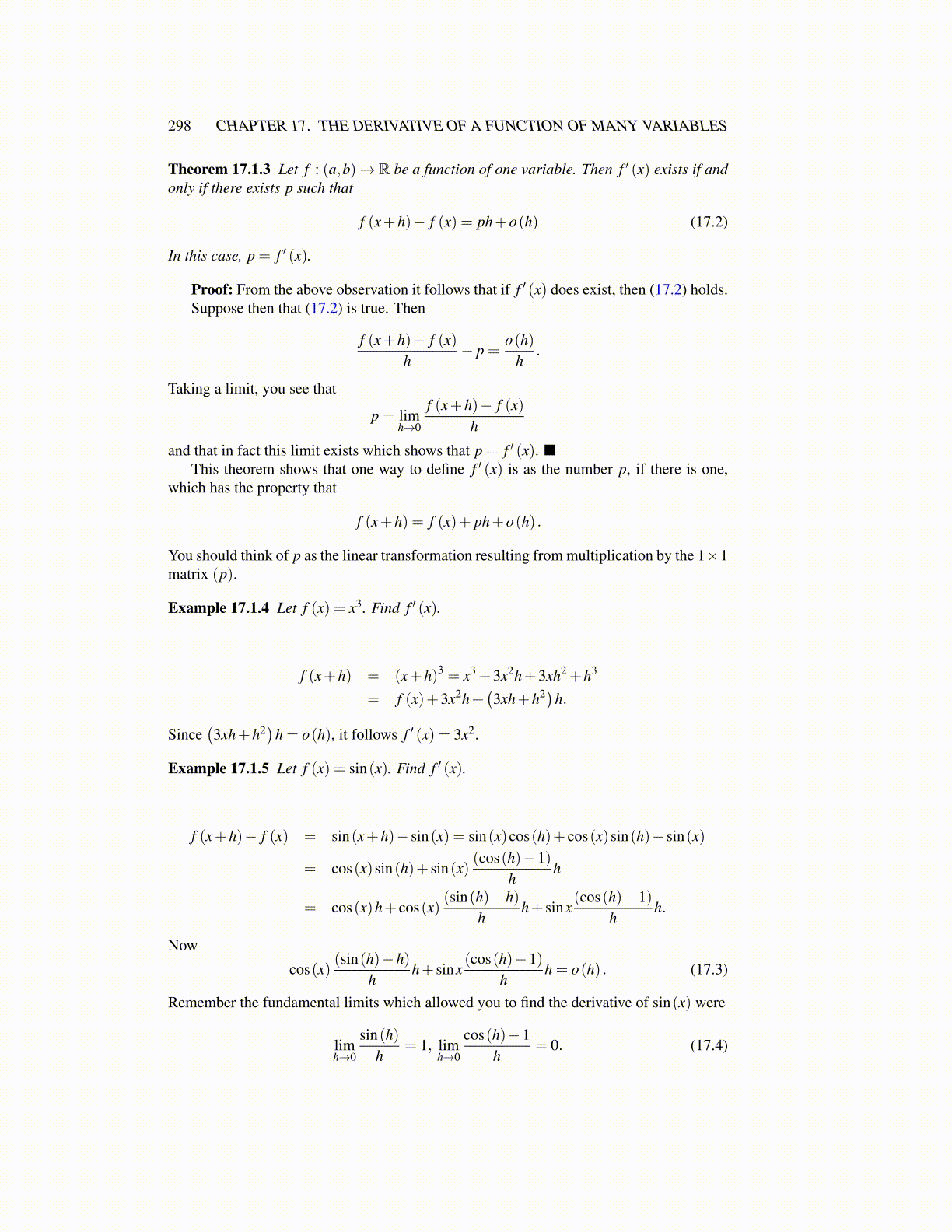
298 CHAPTER 17. THE DERIVATIVE OF A FUNCTION OF MANY VARIABLES
Theorem 17.1.3 Let f : (a,b)→ R be a function of one variable. Then f ′ (x) exists if andonly if there exists p such that
f (x+h)− f (x) = ph+o(h) (17.2)
In this case, p = f ′ (x).
Proof: From the above observation it follows that if f ′ (x) does exist, then (17.2) holds.Suppose then that (17.2) is true. Then
f (x+h)− f (x)h
− p =o(h)
h.
Taking a limit, you see that
p = limh→0
f (x+h)− f (x)h
and that in fact this limit exists which shows that p = f ′ (x). ■This theorem shows that one way to define f ′ (x) is as the number p, if there is one,
which has the property that
f (x+h) = f (x)+ ph+o(h) .
You should think of p as the linear transformation resulting from multiplication by the 1×1matrix (p).
Example 17.1.4 Let f (x) = x3. Find f ′ (x).
f (x+h) = (x+h)3 = x3 +3x2h+3xh2 +h3
= f (x)+3x2h+(3xh+h2)h.
Since(3xh+h2
)h = o(h), it follows f ′ (x) = 3x2.
Example 17.1.5 Let f (x) = sin(x). Find f ′ (x).
f (x+h)− f (x) = sin(x+h)− sin(x) = sin(x)cos(h)+ cos(x)sin(h)− sin(x)
= cos(x)sin(h)+ sin(x)(cos(h)−1)
hh
= cos(x)h+ cos(x)(sin(h)−h)
hh+ sinx
(cos(h)−1)h
h.
Now
cos(x)(sin(h)−h)
hh+ sinx
(cos(h)−1)h
h = o(h) . (17.3)
Remember the fundamental limits which allowed you to find the derivative of sin(x) were
limh→0
sin(h)h
= 1, limh→0
cos(h)−1h
= 0. (17.4)